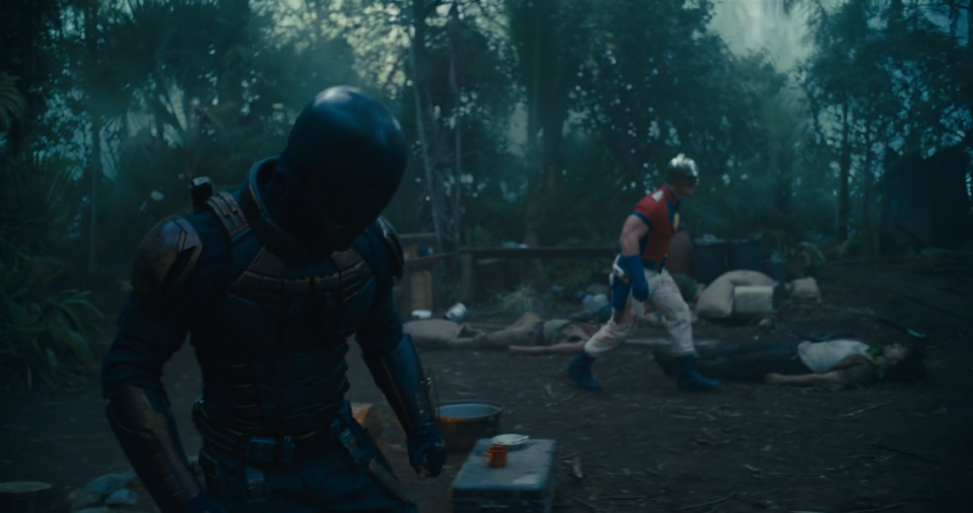In new world where hollywood has the constant superhero flick, “The Suicide Squad, 2021”, came as a breath of fresh air for the genre. Director James Gunn, gives a soft reboot for the movie after the previous film: “Suicide Squad, 2016”, which was received with mixed reviews. The movie brings back some characters from the first iteration and introduces new obscure characters from the extensive D.C comics lore. The movie follows a ragtag team of criminals and anti heroes that are forced to work with the government to uncover a secret project the “Corto Maltese”, government has been working on. The movie is filled with different actions both CGI and practical effects and stunts that create great sequences that keep the audiences engaged. The film was released in Canadian theaters on August 6th, 2021; the movie had an underwhelming Box Office performance for two reasons: the Covid-19 pandemic and the simultaneous release on HBO Max in the U.S. The movie grossed a total $168 million worldwide with a $185 million budget.
The scene is set in a 2.39:1 aspect ratio, a widescreen format that makes the film feel bigger. The setting plays a vital role in world-building, with the jungle environment enhanced by handmade huts and cluttered with objects, debris, and obstacles, making the scene more engaging. According to Ridley Scott, the environment and design are a vital part of a movie, even equally as important as a script (Wille 2015). The depth of field is used to showcase the camp’s size, with the jungle and large trees in the background. The camera follows the characters with a horizontal tracking shot that reveals more of the camp and new threats as it moves. During some shots, the focus shifts to highlight key action moments, such as when Bloodsport uses a specific weapon. The camera remains at eye level, placing the audience in the action and allowing Bloodsport to take the lead while Peacemaker shines in the background. The camera movement allows the scene to flow smoothly, showing the passage of time and space as the characters move through the camp. According to Vivian Sobchack, the camera’s fluid movement allows for a movie to have a great immersion and help in storytelling (Ángel et al. 2023) Bloodsport and Peacemaker are side by side, competing to see who kills the most enemies and how “cool” it looks. Their choreography keeps them in frame, showing their distinct methods of violence while staying close to each other. Bloodsport is slightly behind, using a more strategic approach, while Peacemaker, with a more reckless personality, is in front, using a more direct combat style. The one-minute sequence found at minutes 33-34 features 19 cuts, mostly used during moments of wrestling, fist fighting, or close struggles. Initially, the cuts feel organic and fluid, but after multiple rewatches, they become more obvious. Despite this, the quick cuts still work well, highlighting the quick actions for the characters in frame. According to Roger Penn, fast cuts and continuous cuts are understood as a quick activity (Penn, 1971).
The scene features a clear character diversity and representation, led by two actors. The first is Robert Dubois, known as Bloodsport and portrayed by Idris Elba, an African American mercenary and assassin; the second is Christopher Smith, known as Peacemaker and portrayed by John Cena, a Caucasian American vigilante and anti-hero. The environment and background characters further emphasize this representation, with a mix of men and women of Latino descent, creating a genuine world for the fictional island of Corto Maltese, located in South America. These aspects of representation are reflected through various methods, such as the clear contrast in the violence styles of Bloodsport and Peacemaker. Elba’s character is precise and quiet, while Cena’s is a tank, using larger weapons to defeat enemies. The set also authentically reflects South/Central American culture with items like coffee, cigarettes, Spanish-language radios, baths, hammocks, and characters with accurate accents.
The action scene features clear graphic violence, marking one of the first traditional D.C projects to openly showcase it. It begins with quick camera movements to depict active action, then slows down as the characters stealthily infiltrate the camp, with the camera panning left to right to show them clearing a supposed bandit camp using various weapons and the environment. This is one of the first mainstream superhero films to depict heroes actively killing and committing violence. The movie carries an R rating due to explicit language, violence, and adult humor. With the rise of superhero fame in Hollywood, such adult themes and action may negatively impact younger audiences expecting a Marvel-like film with softer tones and a PG-13 rating. R rated films with violence and mature content can shape behaviours and influence of the violent and mature content on audiences who might not been prone to these actions (Janssen et al. 2017). Movies influence viewers, and for superhero films with a varied demographic, explicit violence can suggest to kids and teenagers that violence is “fun” or acceptable.
Bibliography
Ángel, Miguel, Jarkko Toikkanen, Ralf Schmälzle, and Jane Stadler. 2023. “An Embodiment of the Cinematographer: Emotional and Perceptual Responses to Different Camera Movement Techniques.”
Janssen, Tim, Melissa J. Cox, Mike Stoolmiller, Nancy P. Barnett, and Kristina M. Jackson. 2017. “The Role of Sensation Seeking and R-Rated Movie Watching in Early Substance Use Initiation.” Journal of Youth and Adolescence 47 (5): 991–1006. https://doi.org/10.1007/s10964-017-0742-0.
Penn, Roger. 1971. “Effects of Motion and Cutting-Rate in Motion Pictures.” AV Communication Review 19 (1): 29–50. https://doi.org/10.1007/bf02768430.
Wille, Jakob Ion. 2015. “Shaping Dreams: Design Ideas and Design Fiction in Movie and Television Production Design.” Artifact 3 (4): 9. https://doi.org/10.14434/artifact.v3i4.12812.


Aiden Goetz
The paper gives a detailed analysis of James Gunn’s “The Suicide Squad” (2021), discussing its cinematography, character representation, violence, and impact on the superhero genre. However, there are areas that could use some improvement.
One of the strengths of the paper is its breakdown of the film’s cinematography and camera work. The discussion of the 2.39:1 aspect ratio and its effect on world-building is insightful, and references to film theorists like Ridley Scott and Vivian Sobchack. An area of improvement could be within the explanation of citations. For instance, while Roger Penn’s (1971) analysis of fast cuts is mentioned, the explanation of how it directly applies to “The Suicide Squad” could be expanded.
Additionally, grammatical errors and awkward phrasing occasionally disrupt readability. A more formal academic tone would enhance credibility, avoiding casual phrasing like “kills the most enemies and how ‘cool’ it looks.”
Overall, the paper does a great job of analysing the image, while using reliable citations to depict the image. One thing to work on is readability, this would strengthen the effectiveness of the paper as a critical review.
Eiltan Solouk
I found the analysis of The Suicide Squad (2021) to be visually detailed and well-organized, especially in how it breaks down camera movement and character contrast between Bloodsport and Peacemaker. I agree with the previous critique that the mention of the 2.39:1 aspect ratio and the jungle set design really strengthened the mise-en-scène description. The writer’s use of sources like Ridley Scott and Vivian Sobchack helped support the analysis of cinematography and immersion. However, like the other student noted, some sources such as Roger Penn’s on editing could have been more clearly connected to the specific sequence. It would help to explain exactly how those 19 cuts affected pacing or audience perception in more depth.
I also agree that the tone could be more polished — some casual phrases like “kills the most enemies” take away from the academic feel. Still, the description of the image is accurate and matches the action described, and the points about graphic violence and its effect on younger audiences are important and well-supported with scholarly evidence. Overall, this paper presents strong ideas with solid research but would benefit from smoother writing and slightly deeper explanation of its sources